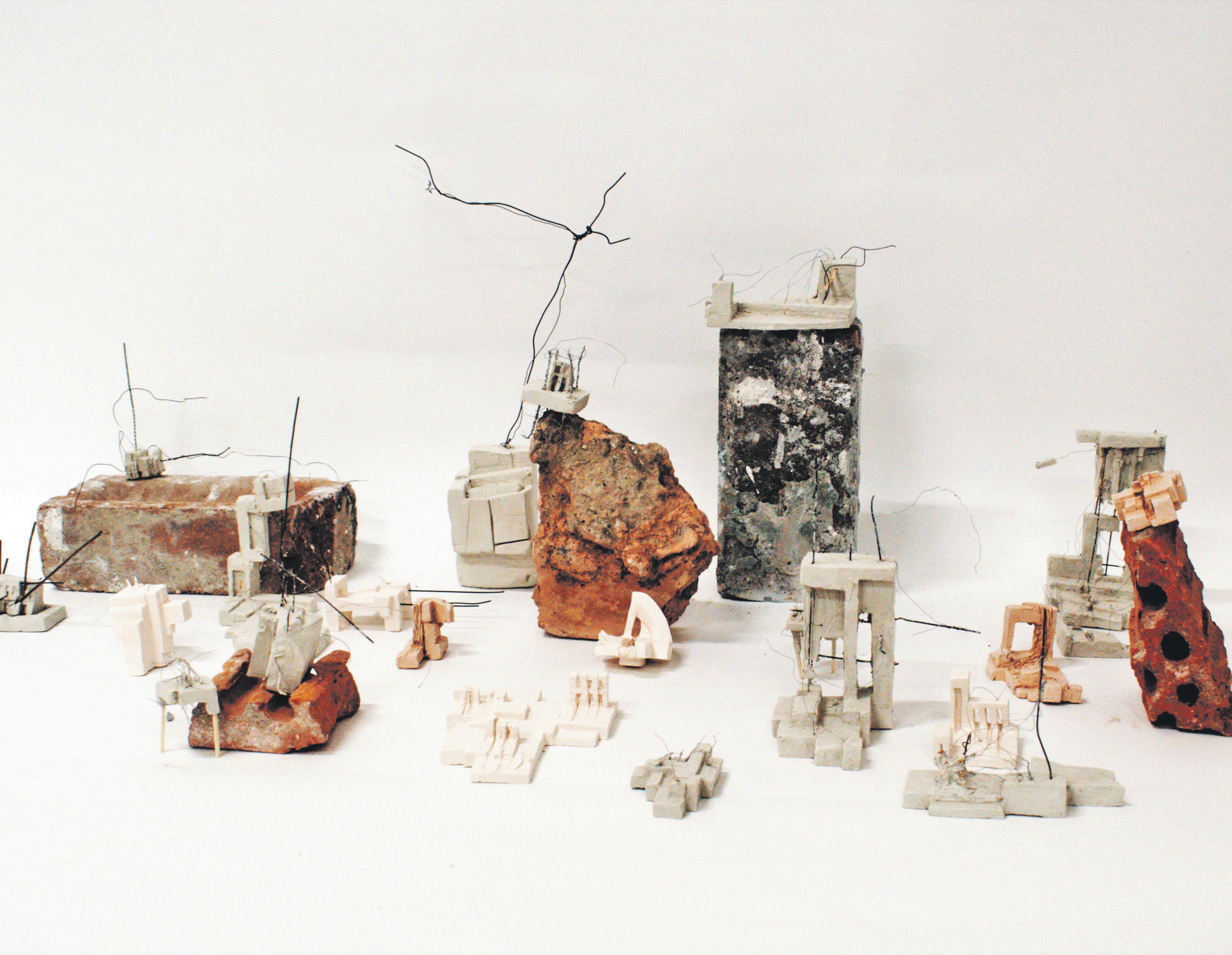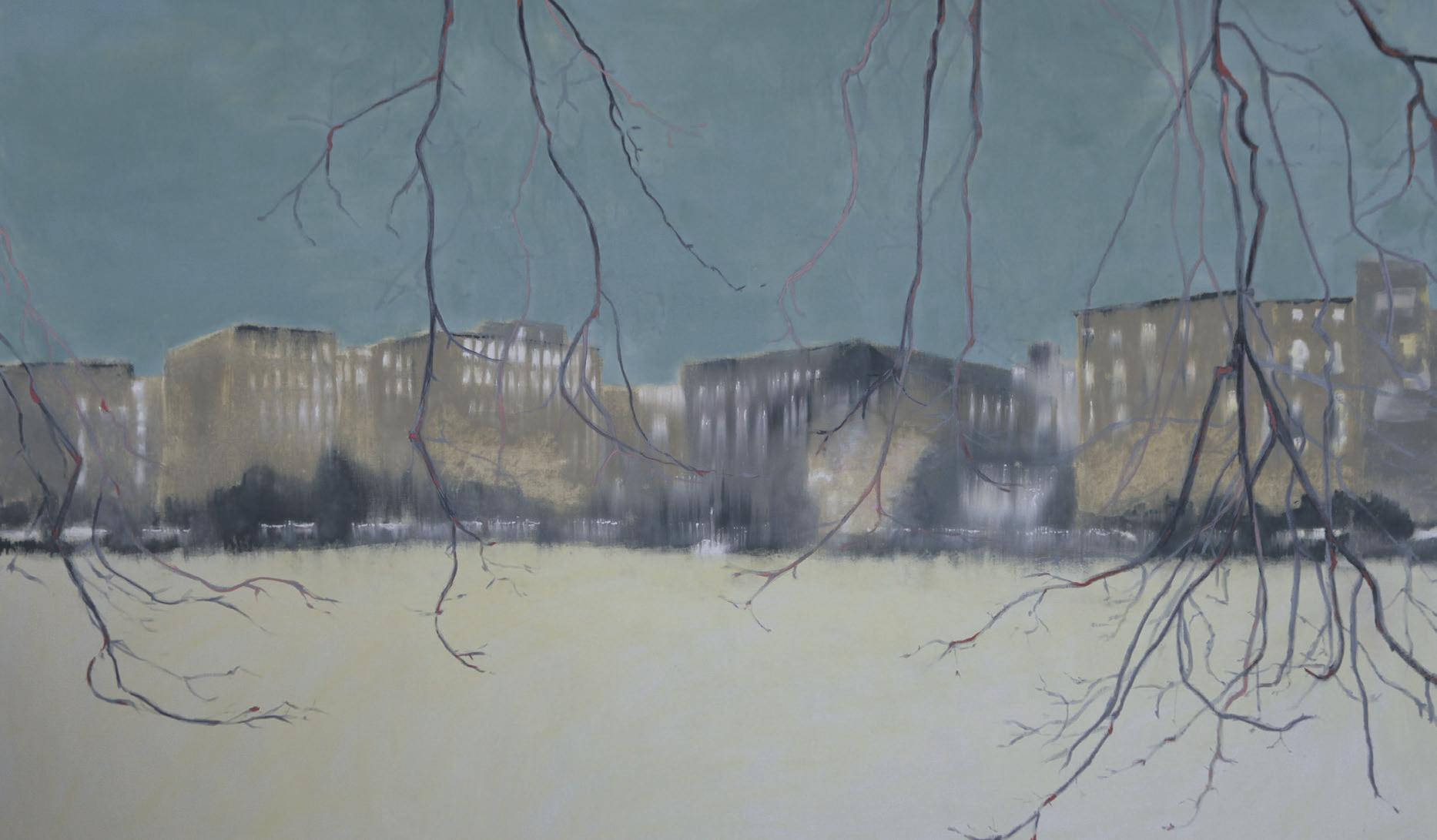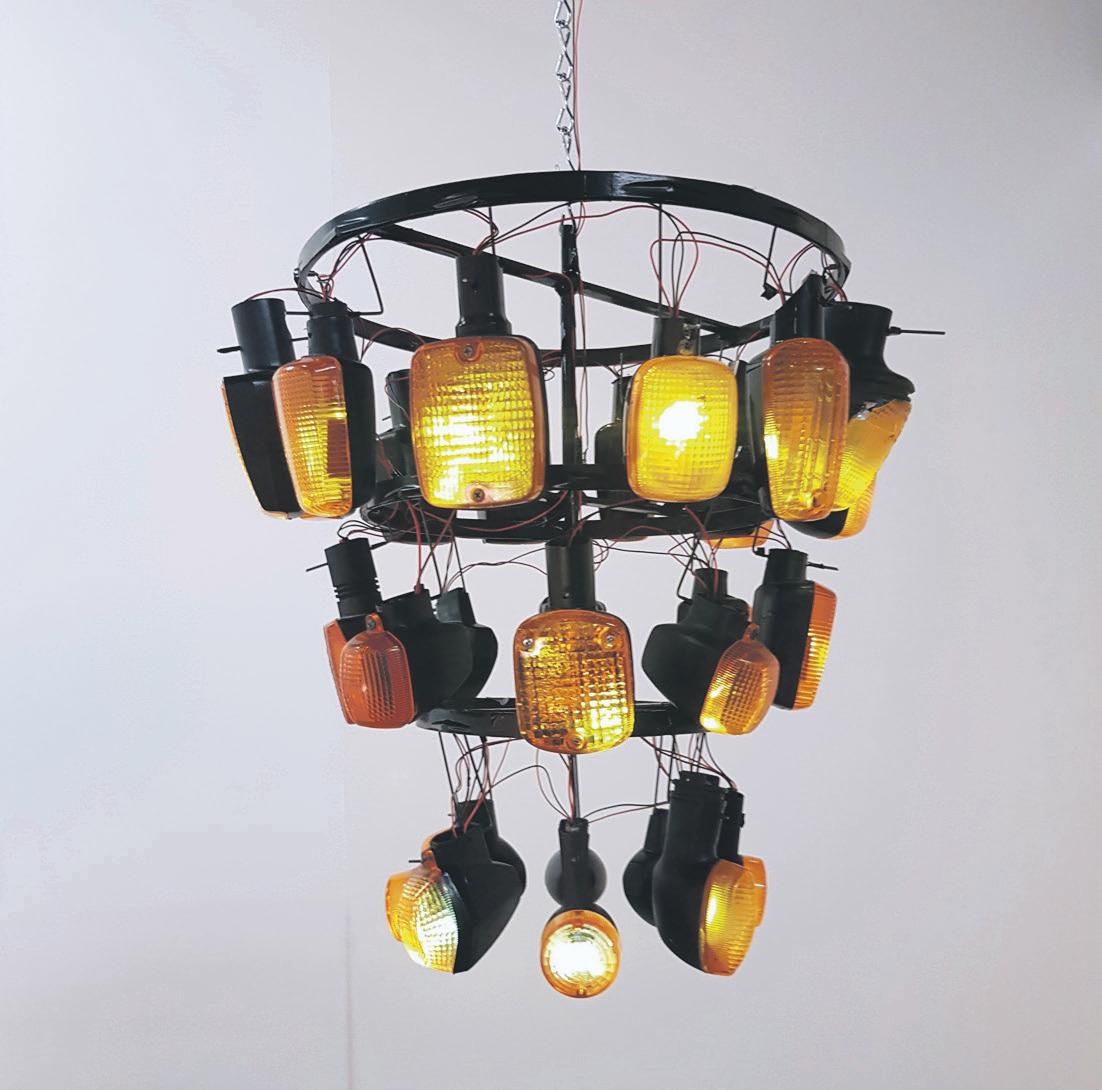
5 minute read
The Space Between. Jennifer Redmond considers various artworks
Aideen Farrell, Untitled sculptural arrangement, 2020; image courtesy the artist and Sample-Studios.
The Space Between
JENNIFER REDMOND CONSIDERS VARIOUS ARTWORKS IN ‘CAHOOTS’ – AN ARTIST-LED DIGITAL EXHIBITION.
THE PAST YEAR has been an exceptional one for artists. It has been difficult to make work and problematic to find ways and places to show it. Critical opinions as to the merits of creations are usually formed in the physical presence of artworks. Yet here we are, at the mercy of online viewing tools, trying to make judgements on compositions in spaces that are notional.
‘Cahoots: The Space Between’ (18 December 2020 – 28 February 2021) was a collaboration between A4 Sounds (Dublin) Sample Studios (Cork) and Engage Art Studios (Galway). The curator, Nicola Anthony1, used the online platform artsteps.com to show the artworks. Selected through an open call, the exhibiting artists were Paul Malone, Brigid Mulligan, Noelle Gallagher, Aoife Claffey, Kim-Ling Morris, Seiko Hayase, Kathryn Kelly, Aideen Farrell, Alisha Doody, Megan Scott and Vivienne Molloy. The digital exhibition was supported by Cork City Council and by Galway 2020 European Capital of Culture and was bolstered by a series of video interviews with the artists, which were released weekly until the end of February on TACTIC Sample-Studios’ YouTube channel.
In her curatorial statement, Nicola Anthony claims that as a result of COVID-19, the boundaries of our personal realms have shifted – we now inhabit more ambiguous spaces. The artworks in this digital exhibition were chosen because they explore a ‘transitional period’. They contain messages and traces of histories embedded within objects and spaces, explorations of aphasia2, anxiety, loss and death. They are markers of place and time, of language barriers and of otherness. The collected works invite viewers to see the world from an intangible and permeable place.
Guided by these thoughts, I open the link to the artsteps website, where

Noelle Gallagher, Alveoli Hippocastanum, 2020; image courtesy the artist and Sample-Studios. Brigid Mulligan, Chandelier, 2018; image courtesy the artist and Sample-Studios.

the exhibition is installed. Using an iPad, I do the tutorial – there are interactive and chat buttons, but sadly no sound. I follow the tour and a set of blue footprints brings me to Seiko Hayase’s work. These are delicate, blood-red plaster heart sculptures, backlit and encased in concrete boxes. Hayase speaks of a trapped heart, trapped emotions, and wonders if others feel as she does; she begs empathy from her audience. The work conjures the heartache caused by the anxiety of living at an accelerated pace. What does a visual language of dismantling anxiety look like? This is Vivienne Molloy’s question, which she addresses by weaving tapestries from threads of social political and economic anxieties. The result is a surprisingly uplifting and colourful piece.
The next work is a large photograph of a chandelier made with motorcycle indicators by Brigid Mulligan in 2018. In the interview with Mulligan that accompanies this piece, the indicator lights gently flicker. They represent the memory of a physical presence. For Mulligan, they communicate an emotion that is too delicate for words. It is a compelling and striking piece, forged from grief and loss. The relationship between loss, death and beauty and the psychic states of the transcendent, melancholic and unconscious, are further explored in a series of Giclee prints, produced by Kathryn Kelly – an artist who works with lens-based media to evoke powerful representations of trauma.
Kim-Ling Morris’s sculpture has a captivating title: My Full Mouth, My empty Heart. The work is about the dissatisfied and desiring nature of humanity. The principal structure is the painted, recycled frame of a large canvas, which is perched on salvaged desk legs, festooned with fringed baling twine. “My full mouth” is written in morse code on the top half and on the bottom part is written: “my empty heart”. The piece is photographed so that the shadows in the background do indeed inhabit the sculpture and suggest the liminal.
In room two, there is an oil painting on linen by Noelle Gallagher, entitled Alveoli Hippocastanum (2020). It is named for the acute lung injury that causes fatality in COVID-19 infection. Gallagher features trees in her paintings because, for her, they signify: “...the lungs of the world,” gasping for breath, on a planet increasingly colonised by man. The painting is a night scene in an urban setting. The buildings are melting into the earth and the naked branches of a tree occupy the foreground.
Paul Malone’s Scorched Earth, a mixed media work on steel, incorporating sand and photography, and Blackrock Diving Tower are explorations of language as landscape, where the landscape becomes a form of language. The imagery is abstract and the materials used are designed to corrode during their exposition. In his interview, Malone explains the process of amalgamating elements from his environs in his works as cues, to prompt a larger discussion around the depletion of the natural world.
How to Live Here is an ongoing art project by Alisha Doody, which expresses the artist’s desire to return to her rural home as a queer woman. Doody examines identity through the distant and the familiar, and through relationships to the land. This work is a holographic video of a traditional knitter. Megan Scott exhibits a large print called Pathways, featuring what might be brain tissue; we are told that a participatory sound piece will be available from 12 January. This work deals with the artist’s experience with aphasia and themes of language and landscape. As with Doody’s work, the full import of these creations will be best appreciated by also listening to the recorded artist interviews. Overall, this is a well thought out exhibition. I applaud the collaboration and the efforts made to reach out to the viewer, and to provide an evocative experience, in the precarious circumstances of pandemic.
Jennifer Redmond is an artist, writer and editor at mink. run, an online moving magazine and artist collaborative organisation.
‘Cahoots: The Space Between’ ran online from 18 December 2020 to 28 February 2021. artsteps.com
Notes
¹Nicola Anthony (b.1984) is a British artist, known for metal text sculptures and burned paper drawings, which give glimpses into the effects of displacement, migration and intergenerational trauma. She focuses her research on untold narratives, collective memory and life stories.
²Aphasia is a condition that robs you of the ability to communicate. It can affect your ability to speak, write and understand language, both verbal and written.












